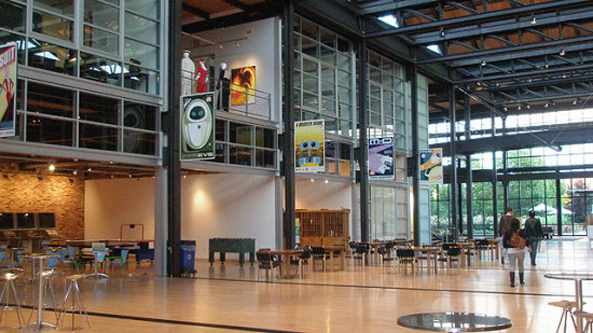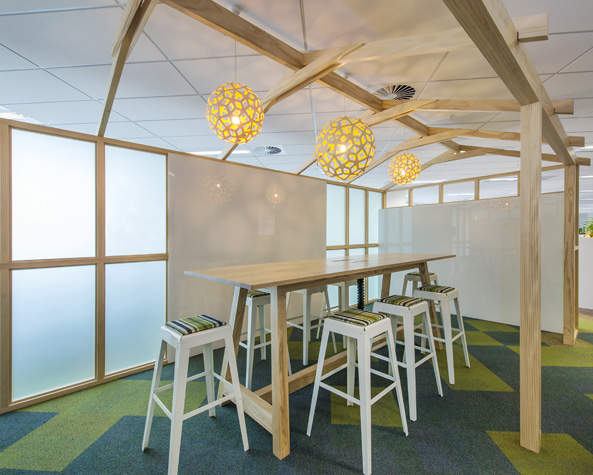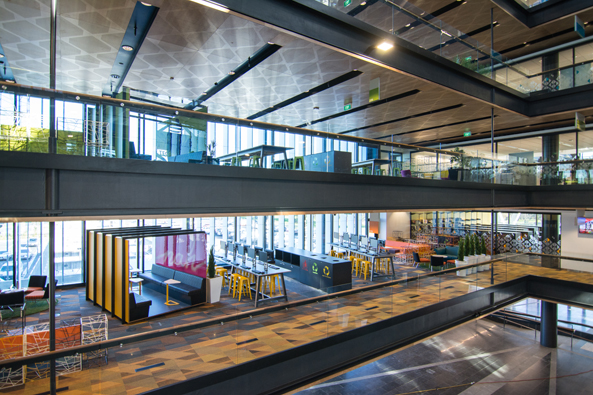Yeah I know what Gamification means
Mon, 26 Jan 2015
I will start this post off being honest ...
When Gareth, Jamie and myself read this as a forum topic for Orgatec 2014, there was an awkward silence as we all realised we didn't know what it was. Sure, it was a word I had heard in passing conversation and presentations in reference to modern working environments, but truly I didn't understand what it meant.
So when you don’t know something that could be influencing a key part of your working world, best you go and find out about it. So off we went to listen to Sebastian Deterding.
Gamification isn’t a new concept, (looking back to MIT (USA) building built in 1943 as a known creative work space) but it has been named and supported by scientific research and testing proven to enhance working environments ... So what is it?
In basic terms, it is gaming in the workplace, which inherently is difficult with most offices designed and facilitated to be the most non-gaming (fun) suited environments.
But what is “gaming”? Gaming, as it was explained to us, is not putting a table tennis table in the lunch room and telling your employees to play table tennis at morning tea and lunch time and “have fun”, but creating an environment where staff play and compete with each other in a natural way as a part of their daily work.
Helping out with challenges, celebrating wins, solving problems and hanging out naturally becomes easy when you have a more fun, creative playful environment that encourages more interaction together both formal and informal. Work becomes a game where you keep wanting to get to that next level or higher score (or both).
On a recent survey in the UK, 80% of managers said that the more relaxed their staff are the better they worked. Also, according to Sebastian, motivating staff as opposed to the alternative, reduces stress and fear, meaning workers have more trust and feel better in the workplace.
Where does workplace design have its place here?
Like I always say, workplace design must match workplace culture. If you want a playful workplace that subscribes to the ways of Gamification, then first and foremost it must be led in practice from the top, through senior managers and leaders within the workplace. Then it is vitally important the office environment is designed and fitted out to encourage and foster this. Understand the purpose of your organisation and provide the tools and the environment to support it.
Some playful international spaces we were advised that had created environments conducive to Gamification ...
Pixar 2000

Zappos Las Vegas Downtown Project

But then I thought, what sites close to home have design elements in their workplaces that promote connectivity and playfulness? ...
Ministry of Business Innovation & Employment with it’s use of central collaboration and break out hubs positioned on every floor facing the large atrium in their 8 storey fit out in Wellington.

Lion, Napier Street themed office space with a ground floor bar, central cafeteria and themed meeting rooms.

Manukau Institute of Technology’s new building promoting natural open learning through the design of its open central atrium and connected open meeting, collaboration and break out spaces.

Do you consider Gamification an important aspect of your working environment?
My belief is if your workplace culture needs it, then design must support it.
Jono Vidak - Director - Vidak Limited